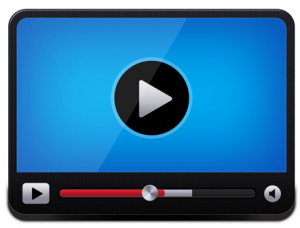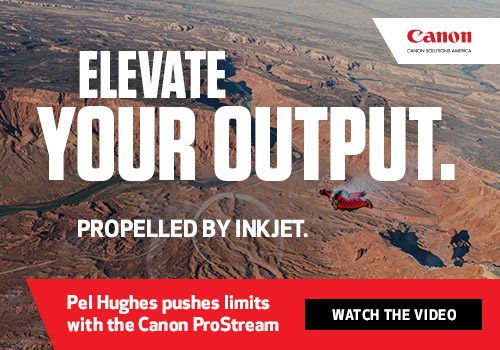I took a shot and asked Jeff Lewis if he could find some time to share his knowledge and experience with us, and I am really honored that he did! Jeff keeps me very well informed about AGFA Graphics through his press releases, and over time our email exchanges have developed into welcomed comic relief. Jeff is that perfect balance of smart and funny that keeps me on my toes, and makes his writing style and point of view beyond a perfect fit for PMC. Connect with him, and value his advice – he walks the walk!
The Top Five Things Your Press Release Needs to Get Noticed
by Jeff Lewis, Group M Cross-Media Marketing and Public Relations
Ever since we humans figured out how to communicate, we have fretted over and predicted the death of previous communication technologies. Whether we chiseled words into stone, put ink to papyrus, broadcast over the airwaves, blogged or posted social media status updates with a cell phone, people have found newer and more effective ways to communicate (notice that all the things I listed here, we still do).
The same is often said about a much-maligned but very useful communication tool: the press release. Generally speaking, press releases are ideally 400-word summaries that provide information about a particular product, service or event from which reporters and their readers can gain wisdom or benefit in some way. Some have decided that press releases have outlived their usefulness, often relegating them to the shadows of Twitter, LinkedIn and other social media.
On the contrary, social media and other online destinations are precisely the reason why press releases are still most valuable. Press releases are still needed to provide content; social media is another in a long line of methodologies for delivering that content.
A long time ago in a galaxy very close by to where we are right now, press releases were printed and mailed, or faxed, to reporters; today, they are emailed, posted on websites, disseminated via Twitter, liked and shared. It’s the content that people still need – and delivered in a tidy little package – to eager recipients.
So how can you make a press release most useful to you, your audience and the reporters who still use them? Here are the top five things your press release must contain in order for it to get noticed and be helpful to all the parties involved:
I cannot underscore this enough. If your press release (also sometimes referred to as a news release) doesn’t have news in it, it is useless. Informing the public via a press release that you redesigned your lobby and now it looks pretty isn’t worthy of a press release (you may want to Tweet a photo of your new lobby; that’s acceptable and encouraged). Have you done something (or are you planning to do something) that helps your customers or makes working with you more efficient or cost-effective? Have you done a particularly unique job for a client who is willing to share that story? Have you purchased a new piece of equipment that enables you to provide a new service? These are stories that worthy of a press release.
2) Headlines that convey what the press release is about
What is the purpose of a headline? A headline summarizes the content and draws in the reader. If your news is worthy, then your headline will be (and should be) too. Headlines that proclaim “The Most EPIC Thing You Will Read All Day” or “Pics of Celebrities and their Beach Bods!” might work in the short-term, but eventually, readers will wise up to those kind of shenanigans and steer clear of your press release. Get creative, but don’t cry wolf.
3) Contact information
Now that the press and readers (your customers and potential customers) have read your press release, you want to make it easy for them to contact you so that they can get more information about the topic or engage you in conversation. Don’t send them to a phone number that some random employee answers (and who may not be in a position to provide the information being requested). List the name for a specific communications person (or more than one) within your organization and all of that person’s direct methods of contact (landline and cell phones, email, mailing address, fax, Twitter, Facebook page, IM, Skype, Instagram – whatever is used). The easier you make it for reporters and readers to get in touch with you, the more they will appreciate you reaching out to them and providing the useful information in the first place.
4) Images and videos
 Press releases tend to focus on words; in the internet age, text still provides the most easily searchable (and therefore most convenient) way to get messages found, absorbed and appreciated. News articles like to use images to also get their information across. Make sure your press release provides links to images or videos that can be provided for use in articles, or to get the point across. If you are a manufacturer and you have a new gadget that does something specific, provide images of that gadget, or a link to a video that shows how it works.
Press releases tend to focus on words; in the internet age, text still provides the most easily searchable (and therefore most convenient) way to get messages found, absorbed and appreciated. News articles like to use images to also get their information across. Make sure your press release provides links to images or videos that can be provided for use in articles, or to get the point across. If you are a manufacturer and you have a new gadget that does something specific, provide images of that gadget, or a link to a video that shows how it works.
5) News
This bears repeating: your press release must contain news. That’s what reporters want. That’s what your customers want. Don’t stop at one. You have many stories to tell, many ways you can help your customers. Don’t be shy.
Press releases that get noticed are the ones that are helpful and unique. The same principles that guide you in your everyday business should be the same principles that guide you when creating press releases to tell the world all about you and how helpful you can be.
Jeff Lewis is the vice president of Media Relations for Group M Cross-Media Marketing and Public Relations in New York. He is a former journalist who still carries with him a journalist’s mindset. His clients have “magically” appeared on websites, in technology publications, on cable news networks, and in newspapers of all sizes. You can find more helpful marketing nuggets by connecting with him through email, LinkedIn, following him on Twitter, or liking Group M’s Facebook page. When he is not securing placements for his clients he can be found skiing, gardening, or yakking it up on his radio show every Friday at noon following the news (streamed live here).













2 Responses
Thank you for the great tips, Jeff!
msienicki You’re most welcome, Melissa…thanks for reading the piece!